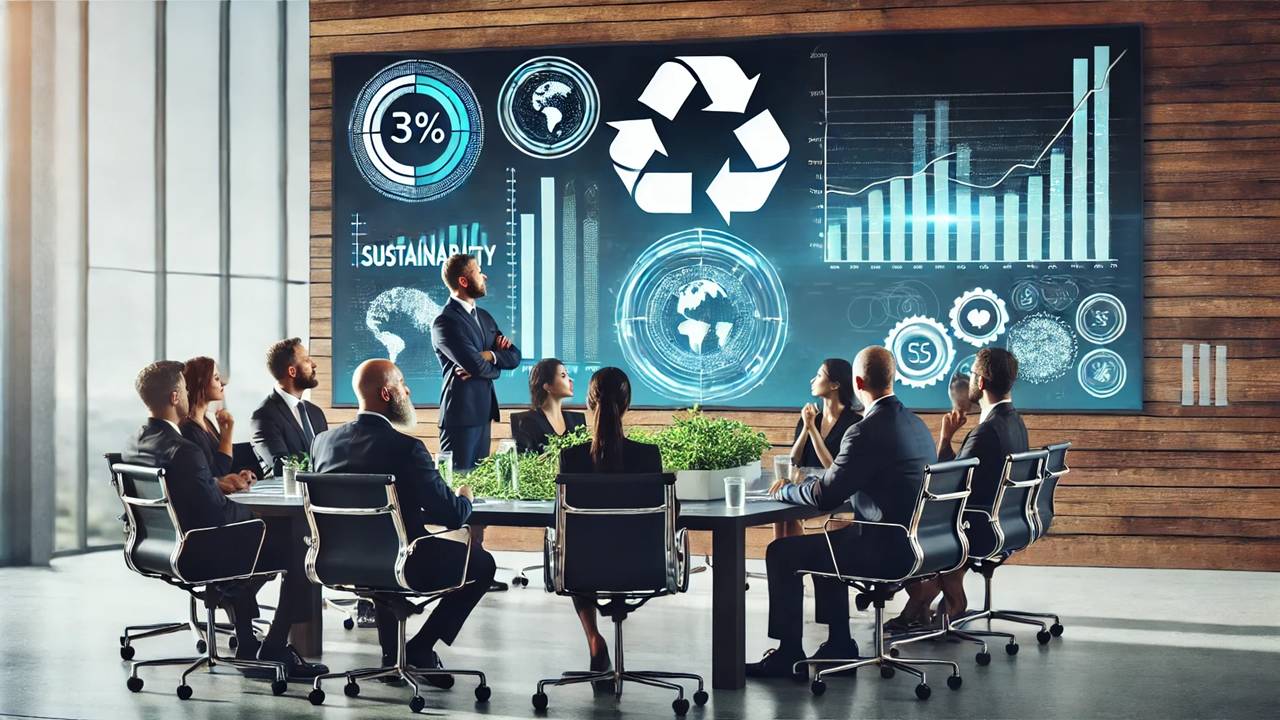Blueprint for Change: How Organizations Can Power Sustainable Development
This article delves into the recently published "Guidelines for Contributing to the United Nations Sustainable Development Goals" (ISO/UNDP PAS 53002:2024), highlighting how organizations can integrate sustainability into their core operations. The guidelines urge businesses to take a holistic approach, from leadership and innovation to transparent reporting and collaboration, ensuring their contributions to the SDGs are impactful and lasting. With clear objectives and continuous improvement, organizations can be at the forefront of global sustainability efforts.

The global march toward sustainable development is not the responsibility of governments alone; organizations worldwide are being called upon to step up and integrate sustainability into their core operations. The recently released "Guidelines for Contributing to the United Nations Sustainable Development Goals" (ISO/UNDP PAS 53002:2024) aims to provide a comprehensive roadmap for businesses and institutions to align with the 2030 Agenda for Sustainable Development. This article explores the key aspects of the guidelines, offering insight into how organizations can adopt responsible business practices, promote innovation, and contribute to a more sustainable future.
Understanding the Framework: Impact and Responsibility
The "Guidelines for Contributing to the SDGs" make it clear that organizations must take a holistic view of their impacts, both internal and external. Every business, whether it operates on a local or global scale, interacts with various environmental, social, and economic systems. As the guidelines explain, an organization's responsibility is to recognize how these interactions contribute to or detract from the Sustainable Development Goals (SDGs).
At the heart of this framework is the call for businesses to minimize negative impacts—such as environmental degradation or social inequality—and maximize positive contributions, such as improving local livelihoods or fostering sustainable innovation. This is not simply about corporate social responsibility, but about embedding sustainability into every facet of an organization's operations.
The guidelines emphasize that organizations must assess their external environment, considering factors like sustainability trends, governmental policies, and the needs of underrepresented communities. Internally, organizations need to reflect on their structure, governance, and policies to ensure they are equipped to support sustainable practices.
Leadership, Innovation, and Collaboration
A major theme throughout the guidelines is leadership's role in driving sustainable practices. Top management in any organization holds the power to set the tone for sustainability by ensuring that sustainability policies are established, and aligned with business strategies and that appropriate resources are allocated.
However, leadership goes beyond the boardroom. The guidelines encourage organizations to foster a culture of innovation that can transform business models, products, and services. Examples of this might include developing clean energy solutions, adopting circular economy practices, or collaborating with external partners to create innovative products that reduce environmental impact.
Collaboration is particularly vital. To effectively contribute to the SDGs, organizations are urged to partner not only with governments but also with NGOs, local communities, and even competitors to achieve collective impact. By working together, industries can accelerate progress towards sustainability goals that no single entity can achieve alone.
The Importance of Clear Objectives and Transparent Reporting
Setting clear, measurable objectives is a cornerstone of the guidelines. For organizations to track their progress, the guidelines recommend establishing specific SDG-related goals and monitoring them through key performance indicators (KPIs). These goals must be ambitious, but also realistic, taking into account both global standards and local realities.
Crucially, the guidelines stress transparency in reporting. Organizations are encouraged to document not only their successes but also their challenges and any unintended negative consequences of their actions. This kind of honesty builds trust among stakeholders, including employees, customers, and investors, who increasingly demand accountability when it comes to corporate sustainability.
Moreover, by regularly publishing reports on their progress toward the SDGs, organizations can help drive industry-wide conversations on best practices and foster a culture of continuous improvement. The guidelines recommend using well-being metrics and integrating impact data into everyday decision-making processes.
Continuous Improvement and Long-term Impact
The Guidelines for Contributing to the SDGs are not a one-time checklist; they are a framework for ongoing development. The document emphasizes the need for organizations to regularly evaluate and refine their efforts, ensuring that they stay aligned with global sustainability trends and respond to emerging challenges.
In the same spirit, organizations are encouraged to look beyond their immediate objectives and consider their long-term impact. This could mean focusing on building resilient business models that can withstand economic shocks or climate-related disruptions, or ensuring that products and services promote equitable outcomes for underrepresented communities.
In particular, the guidelines call for organizations to pay close attention to how their actions affect vulnerable populations and ecosystems. By embracing a "leave no one behind" approach, organizations can contribute to achieving the SDGs in a way that promotes social justice, environmental stewardship, and inclusive economic growth.
The "Guidelines for Contributing to the United Nations Sustainable Development Goals" provide a clear and actionable path for organizations to take their role in global sustainability seriously. Whether through leadership, innovation, collaboration, or transparent reporting, businesses that adopt these guidelines are not only contributing to a more sustainable world but are also positioning themselves for long-term success in an increasingly eco-conscious market.
As we move closer to 2030, the private sector's involvement will be critical to achieving the ambitious goals outlined in the SDGs. The ISO/UNDP PAS 53002:2024 guidelines offer a blueprint for organizations to be a part of this transformative journey, ensuring that their efforts lead to meaningful, measurable, and lasting impact.
- FIRST PUBLISHED IN:
- Devdiscourse
ALSO READ
Tri-Nation Maritime Collaboration Strengthens in South China Sea
Indian Filmmakers Forge New Frontiers in Israeli Collaboration
Sebi revamps investor charter to boost transparency, grievance redressal
Ballot Papers vs. EVMs: A Call for Electoral Transparency
Building Road Safety and Sustainability: Corporate and Community Collaboration










